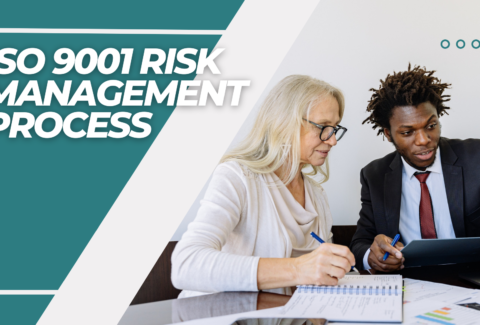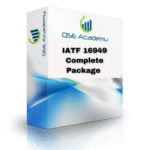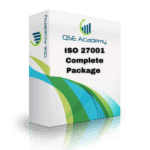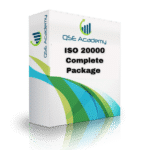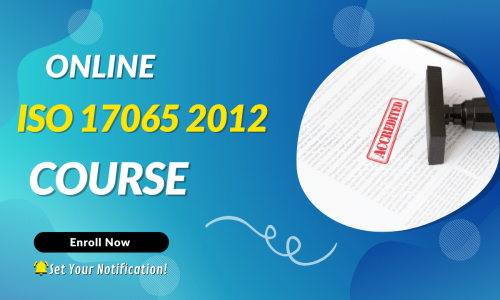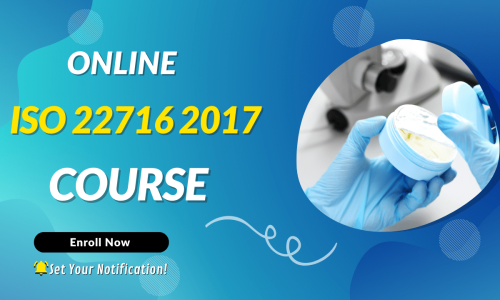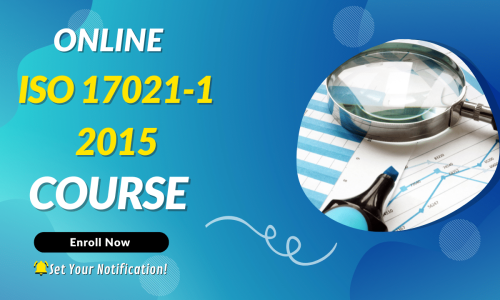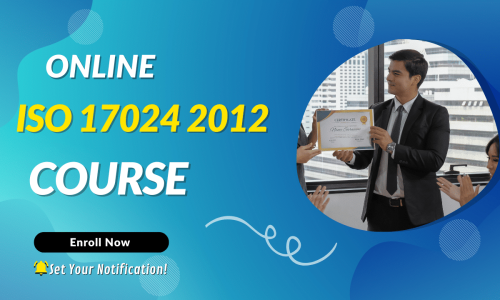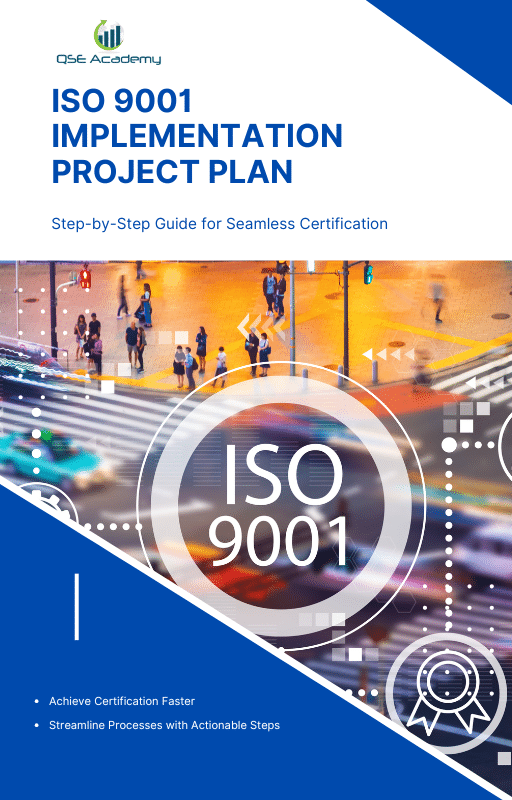Mastering the Scope of ISO 9001: A Comprehensive Guide to (Clause 4.3)
Mastering the Scope of ISO 9001: A Comprehensive Guide to (Clause 4.3)
If you’re exploring ISO 9001, chances are you’ve come across something called the Scope of ISO 9001. But what exactly does that mean, and why is it such a big deal? Think of it like setting the boundaries for your Quality Management System (QMS)—it defines what’s included, what’s not, and how far your system reaches. Without a clearly defined scope, your ISO 9001 implementation can feel like trying to navigate a city without a map.
ISO 9001 has a specific requirement for this in Clause 4.3, which guides organizations on how to determine their QMS scope. This step isn’t just a formality—it’s the foundation of how your organization applies ISO 9001 to its operations. A well-defined Scope of ISO 9001 ensures that your quality processes align with your business goals, comply with customer and regulatory requirements, and make audits smoother.
But here’s the challenge: many organizations either make their scope too broad or too narrow, which can lead to unnecessary complications. A vague scope could make it unclear what’s covered under your QMS, while a scope that’s too limited might exclude critical processes, leading to compliance issues.
So, how do you get it right? That’s exactly what we’re going to explore in this section. We’ll break down Clause 4.3, discuss why the Scope of ISO 9001 is so important, and look at real-world examples of what works—and what doesn’t. Ready? Let’s dive in!
Key Factors in Defining the Scope of ISO 9001
Alright, now that we know what the Scope of ISO 9001 is all about, let’s talk about what actually shapes it. Defining the scope isn’t just about picking random parts of your business and hoping they fit together—it’s a strategic decision that impacts your entire ISO 9001 certification process.
So, what exactly do you need to consider when determining the Scope of ISO 9001? It boils down to a mix of internal and external factors. Let’s break them down.
Essential Elements to Consider When Determining Scope
Every organization is different, which means your Scope of ISO 9001 should be tailored to fit your unique business operations. Here are the key elements that will influence what goes into your scope:
1. Size and Nature of Your Organization
Think of a small local bakery versus a multinational food manufacturing company. Their Scope of ISO 9001 will look completely different.
- A bakery might focus on quality control in ingredient sourcing and customer service.
- A large manufacturer, on the other hand, might need a scope that covers multiple production plants, distribution chains, and international regulations.
Understanding the size and complexity of your business is the first step in defining the right scope.
2. Processes and Activities
ISO 9001 isn’t just about your final product or service—it’s about how you get there.
- Which processes directly impact quality?
- Are there any outsourced activities that should be considered?
- Are there specific departments that fall under the QMS while others don’t?
For example, if your company provides IT solutions, your Scope of ISO 9001 might cover software development, customer support, and data security processes—but not necessarily marketing or HR functions.
3. Products and Services
Your Scope of ISO 9001 should clearly state which products or services fall under your QMS.
- Are you covering all products/services, or just specific ones?
- Do you offer different service levels that require separate quality management approaches?
For instance, a construction company might include commercial and residential projects in its scope but exclude small-scale repairs.
4. Regulatory and Legal Requirements
Regulatory compliance is a huge factor in determining your Scope of ISO 9001. Different industries have different legal obligations, and your QMS must align with them.
- Are there government regulations affecting your industry?
- Do you need to comply with health and safety laws?
- Are there specific customer contract requirements you must meet?
For example, if you’re in the pharmaceutical industry, your Scope of ISO 9001 must align with strict FDA or European Medicines Agency (EMA) regulations.
Internal vs. External Factors That Influence Scope
Your Scope of ISO 9001 doesn’t exist in a vacuum. It’s shaped by both internal and external factors. Let’s take a look at each:
Internal Factors:
These are the things inside your organization that affect the scope:
✔ Business objectives – Are you aiming for better efficiency, improved customer satisfaction, or global expansion?
✔ Workforce and capabilities – Do you have the right people and skills to manage a wide QMS scope?
✔ Locations – Is your QMS covering one site, multiple branches, or the entire global operation?
✔ Technology and infrastructure – Do you have digital tools in place to manage QMS processes effectively?
External Factors:
These are outside influences that impact your Scope of ISO 9001:
✔ Customer expectations – Are your customers requiring ISO 9001 certification for contracts?
✔ Supplier relationships – Do your suppliers impact the quality of your final product?
✔ Market competition – Is a well-defined scope helping you stand out in your industry?
✔ Legal and regulatory landscape – Are there government regulations requiring strict quality controls?
By balancing both internal and external factors, you can fine-tune your Scope of ISO 9001 to meet business needs while ensuring compliance and efficiency.
How to Align the Scope with Business Strategy
Here’s where things get really interesting: Your Scope of ISO 9001 shouldn’t just be about ISO certification—it should support your overall business strategy.
🔹 If your goal is global expansion, your scope should be broad enough to cover international operations.
🔹 If you’re focused on customer satisfaction, your scope should emphasize quality control in customer interactions and product delivery.
🔹 If cost reduction is your priority, your scope should include process efficiency and waste reduction strategies.
A well-defined Scope of ISO 9001 doesn’t just help with audits—it becomes a powerful business tool that drives improvement and long-term success.
Final Thoughts on Determining the Scope of ISO 9001
Defining the Scope of ISO 9001 isn’t about filling in a template—it’s about making strategic choices that align with your business, industry, and goals. Whether you’re a small startup or a global enterprise, getting the scope right from the start ensures that your QMS is clear, effective, and easy to manage.
Up next, we’ll walk through a step-by-step guide to writing a Scope of ISO 9001 statement that is audit-ready and perfectly tailored to your business. Stay tuned!
Step-by-Step Guide to Writing the Scope of ISO 9001 Statement
Alright! Now that we’ve covered what influences the Scope of ISO 9001, let’s get into the practical side—how to write a scope statement that works for your organization.
Think of the Scope of ISO 9001 statement as the introduction to your Quality Management System (QMS). It’s the first thing an auditor will look at, and it sets the foundation for everything your QMS covers. If your scope is too broad, it might be hard to manage. If it’s too narrow, you might exclude critical processes that affect quality. The goal is to strike the perfect balance by clearly defining what your QMS includes while keeping it flexible enough to evolve as your business grows.
So, how do you create a clear and effective Scope of ISO 9001 statement? Let’s break it down into simple, actionable steps.
Step 1: Identify Core Processes and Boundaries
Your Scope of ISO 9001 needs to specify the core activities and processes your QMS covers. This means asking:
✔ What are the main business processes that impact quality?
✔ Which departments or divisions are included?
✔ Are there specific locations covered?
✔ Are there any outsourced processes that need to be considered?
For example, if you run a manufacturing company, your Scope of ISO 9001 might include:
- The design, production, and distribution of industrial equipment.
- The quality control and testing processes within the production line.
- The supply chain and vendor management system.
But let’s say you outsource logistics and shipping—you may need to clarify how those outsourced processes are managed to ensure they align with your quality management objectives.
Step 2: Determine Key Locations and Activities
Not every organization operates from a single site, so your Scope of ISO 9001 should clearly state which locations are included.
✔ Are you certifying a single office, multiple branches, or global locations?
✔ Do different locations have different quality processes?
For instance, a software development company might have one office for design and another for technical support. In that case, the Scope of ISO 9001 might say:
“This QMS applies to the software development, testing, and customer support functions at our headquarters and regional offices in London and Berlin.”
This tells auditors exactly which parts of the company are covered under ISO 9001 and which are not.
Step 3: List Applicable Requirements and Exclusions
ISO 9001 allows for some exclusions, but only if they don’t impact your ability to deliver quality products or services.
✔ If you’re excluding certain ISO 9001 clauses, be prepared to justify why.
✔ Exclusions usually apply to Clause 8 (Operations) when a requirement isn’t relevant to your business.
For example, a consulting firm that doesn’t do physical product manufacturing might state in its Scope of ISO 9001:
“Clause 8.3 (Design and Development) is not applicable, as the organization does not engage in product design.”
This ensures that your Scope of ISO 9001 is specific, compliant, and avoids unnecessary complexity.
Step 4: Align with Business and Customer Needs
Your Scope of ISO 9001 isn’t just about meeting audit requirements—it should also reflect your business strategy and customer expectations.
✔ Are customers requiring ISO 9001 certification for contracts?
✔ Does your scope help strengthen your company’s reputation in the market?
✔ Is it aligned with your long-term business goals?
For example, if you’re a logistics company, your Scope of ISO 9001 might focus on:
- Ensuring timely and damage-free deliveries.
- Managing customer complaints and service quality.
- Compliance with industry safety and environmental regulations.
A strong Scope of ISO 9001 helps customers understand your commitment to quality, which can give you a competitive edge.
Step 5: Document the Scope for ISO Certification
Once you’ve defined your Scope of ISO 9001, it’s time to document it clearly. This statement should be included in:
✔ Your Quality Manual (if you have one).
✔ Your QMS documentation.
✔ Publicly available documents (if required by customers or stakeholders).
A well-written Scope of ISO 9001 statement should be:
✔ Clear and concise – Avoid jargon or overly complex explanations.
✔ Specific but flexible – It should describe your business today while allowing for future growth.
✔ Compliant with ISO 9001 – Ensure it meets the requirements of Clause 4.3.
Here’s an example of a good Scope of ISO 9001 statement:
“Our Quality Management System applies to the design, manufacturing, and distribution of industrial safety equipment at our headquarters and two production sites in the United States. The scope includes quality control, supplier management, and regulatory compliance to ensure product safety and reliability. Exclusions: Clause 8.3 (Design and Development) does not apply as the company does not engage in new product design.”
This statement clearly defines what’s included, what’s excluded, and where it applies—all essential elements of a strong Scope of ISO 9001.
Common Mistakes to Avoid When Defining Scope
Before we wrap up, here are a few common mistakes organizations make when defining the Scope of ISO 9001:
🚫 Being too vague – Saying “Our QMS covers all business activities” is too broad and unhelpful. Be specific!
🚫 Forgetting outsourced processes – If an outsourced function impacts quality, it should be addressed in your scope.
🚫 Ignoring customer or regulatory requirements – Your Scope of ISO 9001 should reflect compliance needs as well as customer expectations.
🚫 Not updating the scope over time – As your business evolves, so should your scope! Make sure to review and adjust it when necessary.
Final Thoughts on Writing the Scope of ISO 9001
Defining the Scope of ISO 9001 isn’t just a paperwork exercise—it’s a strategic decision that shapes your entire Quality Management System. A well-thought-out scope ensures smooth certification, better operational control, and stronger customer trust.
In the next section, we’ll discuss how your Scope of ISO 9001 affects certification and audits, and what auditors look for when reviewing your scope statement. Stay tuned!
How the Scope of ISO 9001 Affects Certification and Audits
Alright, so now that you’ve nailed down your Scope of ISO 9001, you might be wondering—what happens next? How does your defined scope affect your ISO 9001 certification and audits?
Well, here’s the deal: your scope statement isn’t just for show. It’s a critical part of your Quality Management System (QMS), and it plays a huge role in how auditors assess your organization during certification and surveillance audits. If your scope isn’t clearly defined or doesn’t match what’s happening in real life, you could face major compliance issues.
So, let’s walk through how your Scope of ISO 9001 impacts certification and what auditors will be looking for when they review it.
The Role of Scope in ISO 9001 Certification
Think of your Scope of ISO 9001 as the blueprint of your QMS. When an auditor comes in to assess your certification readiness, they use your scope statement to:
✔ Understand what’s covered in your QMS – They need to know which processes, locations, and services are included in the certification.
✔ Verify that your QMS aligns with your business operations – If your scope says you’re covering manufacturing and distribution but you don’t have a documented process for logistics, that’s a red flag.
✔ Ensure compliance with ISO 9001 requirements – Your scope should accurately reflect how your organization meets Clause 4.3 of ISO 9001.
✔ Determine which ISO 9001 clauses apply – If you’re excluding certain requirements (like design and development), auditors will need to confirm that the exclusions are justified.
Without a clear, accurate Scope of ISO 9001, the certification process can get messy—leading to delays, nonconformities, or even rejection.
What Auditors Look for in the Scope of ISO 9001
When auditors review your Scope of ISO 9001, they’re checking for three main things:
1. Clarity and Completeness
Your scope should be precise and easy to understand. It should answer the following questions:
- What products or services does the QMS apply to?
- Which locations or facilities are covered?
- What key processes are included?
- Are there any exclusions?
A vague scope statement—like “We manufacture and distribute products”—won’t cut it. Instead, something like this would be much clearer:
“Our QMS applies to the design, manufacturing, and distribution of electronic components at our facilities in New York and Texas. It covers quality control, supplier management, and regulatory compliance. Clause 8.3 (Design and Development) is excluded, as the company does not design new products.”
This tells auditors exactly what’s covered, leaving no room for misinterpretation.
2. Alignment with Real-World Operations
Your Scope of ISO 9001 must match what actually happens in your business. If your scope says you manage logistics but your company outsources all shipping, that’s a problem.
Auditors will:
- Compare your scope statement with on-site operations to ensure consistency.
- Check if documented processes match the stated scope—if a process is mentioned in the scope but isn’t controlled under the QMS, that could be a nonconformity.
- Confirm that employees understand what’s covered—staff should be aware of how the QMS applies to their roles.
If your Scope of ISO 9001 doesn’t reflect reality, it might lead to audit findings that delay certification.
3. Justification for Exclusions
ISO 9001 allows certain exclusions, but they must be valid and clearly justified.
For example, if your company doesn’t design products but only manufactures them, you can exclude Clause 8.3 (Design and Development). However, if you claim an exclusion that doesn’t make sense—like excluding customer satisfaction monitoring—auditors will likely challenge it.
Your Scope of ISO 9001 should explain exclusions in a way that makes it clear why they don’t apply.
Common Scope-Related Issues in ISO 9001 Audits
Many companies struggle with defining their scope, leading to common pitfalls in audits. Here are some mistakes to avoid:
🚫 Scope too broad or too vague – If your scope is overly general, auditors might question whether you’ve truly defined your QMS boundaries.
🚫 Forgetting to include outsourced processes – If an outsourced process (like contract manufacturing) affects product quality, auditors will want to know how you manage and control it.
🚫 Not updating the scope over time – If your business expands to new locations or adds new services, your Scope of ISO 9001 should be updated accordingly.
🚫 Claiming exclusions that aren’t valid – Auditors will challenge exclusions that don’t have a proper justification.
Adjusting the Scope Over Time
Your Scope of ISO 9001 isn’t set in stone—it should evolve with your business. Here’s when you might need to update your scope statement:
✅ Expanding into new markets – If your company starts operating internationally, your scope should reflect the added locations and regulatory requirements.
✅ Adding new services or processes – If you introduce a new product line or service, your scope should include it to ensure proper quality control.
✅ Merging with or acquiring another company – Your QMS must align with any new operations or locations brought in through mergers.
✅ Major regulatory or industry changes – If laws or standards shift, your Scope of ISO 9001 may need to be updated to maintain compliance.
Regularly reviewing your Scope of ISO 9001 ensures that your QMS stays relevant and effective, preventing surprises during audits.
Final Thoughts on the Scope of ISO 9001 in Certification and Audits
Your Scope of ISO 9001 isn’t just a formality—it’s the foundation of your certification process. A clear, well-defined scope helps streamline audits, prevent compliance issues, and ensure your QMS truly reflects how your business operates.
To recap, here’s what you need to remember:
✔ Your Scope of ISO 9001 must be clear, specific, and aligned with real operations.
✔ Auditors will review your scope to ensure it meets ISO 9001 requirements and matches what happens in practice.
✔ If your company grows or changes, your scope should be updated accordingly.
By taking the time to define your Scope of ISO 9001 correctly, you set your business up for a smooth certification process and a strong, effective Quality Management System.
Now, over to you—when was the last time you reviewed your ISO 9001 scope? If it’s been a while, it might be time for a fresh look!
Mastering the Scope of ISO 9001 for a Stronger Quality Management System
So, we’ve covered everything from what the Scope of ISO 9001 is to how it affects certification and audits. But now comes the big question—how do you ensure your Scope of ISO 9001 remains effective over time?
The truth is, your business isn’t static. It evolves. You may introduce new products, expand to new locations, or change your operational structure. If your Scope of ISO 9001 doesn’t evolve with it, you could end up with a QMS that no longer reflects your real operations—and that can lead to compliance headaches during audits.
In this section, we’ll dive into why regularly reviewing and refining your Scope of ISO 9001 is crucial for maintaining a strong, adaptable, and effective Quality Management System (QMS).
Why You Should Regularly Review Your Scope of ISO 9001
Think of your Scope of ISO 9001 like a roadmap for your QMS. If you were following a map from ten years ago, chances are you’d get lost. The same applies to your QMS—if your Scope of ISO 9001 isn’t updated to reflect business changes, it can create confusion, inefficiencies, and even nonconformities during an audit.
Here’s why keeping your Scope of ISO 9001 up to date matters:
✔ Ensures Compliance: Changes in regulations, industry standards, or ISO 9001 updates might require an adjustment in scope. If your scope doesn’t align with current legal or customer requirements, you could face compliance risks.
✔ Keeps Your QMS Aligned with Business Goals: Your business strategy and quality objectives will likely shift over time. A regularly updated Scope of ISO 9001 ensures your QMS continues to support your long-term goals.
✔ Prepares You for Growth: Whether you expand to new markets, open additional facilities, or introduce new services, your QMS should scale with your business. An outdated Scope of ISO 9001 can lead to gaps in quality control.
✔ Improves Audit Readiness: During surveillance or recertification audits, an auditor will check if your Scope of ISO 9001 reflects actual operations. If there are discrepancies, it could lead to findings that delay or jeopardize your certification.
✔ Enhances Efficiency: Having a clear, well-defined Scope of ISO 9001 helps avoid redundancies, wasted resources, and unnecessary complexities in your QMS.
When to Update Your Scope of ISO 9001
So, how often should you update your Scope of ISO 9001? While there’s no set rule, here are some clear indicators that it’s time for a review:
1. Your Organization Expands or Restructures
🚀 If your company acquires new locations, adds divisions, or merges with another business, your Scope of ISO 9001 should reflect these changes. For example, if your scope previously covered one manufacturing facility, but you’ve now expanded to three locations, your scope needs an update to include those sites.
2. You Introduce New Products or Services
📦 If your company launches a new product line or expands into a new service area, your QMS should cover these additions. Your scope statement should specify whether these new products or services are included in the QMS and which quality processes apply to them.
3. You Change or Outsource Key Processes
🔄 If your organization shifts from in-house production to outsourcing, or if you make major changes to operational processes, your Scope of ISO 9001 should be adjusted. For example, if you used to handle shipping internally but now rely on third-party logistics, your scope should clarify how you manage quality within outsourced activities.
4. Regulatory or Industry Standards Change
📜 If new regulations or industry standards impact your business, your Scope of ISO 9001 may need to be updated to ensure compliance. This is especially important for industries like healthcare, automotive, aerospace, and food production, where quality and safety regulations frequently evolve.
5. Customer or Stakeholder Requirements Change
💼 If your customers or business partners require specific quality controls, your Scope of ISO 9001 should reflect those expectations. For example, if a new client insists on ISO 9001 certification for only specific product lines, your scope should clearly define which areas of the business are covered.
How to Update Your Scope of ISO 9001
If you determine that an update is needed, follow these steps to revise and maintain an effective Scope of ISO 9001:
✅ Step 1: Conduct an Internal Review
- Evaluate any business changes that may impact your QMS.
- Identify any gaps between your documented scope and your current operations.
- Consult key stakeholders (e.g., management, quality teams, and department heads) to ensure all relevant areas are considered.
✅ Step 2: Update Your Scope Statement
- Make necessary modifications to products, services, locations, or processes.
- Clearly define any exclusions, ensuring they are still valid.
- Ensure the revised Scope of ISO 9001 aligns with ISO 9001 Clause 4.3 requirements.
✅ Step 3: Communicate Changes Internally
- Notify employees and relevant departments about the updated scope.
- Provide training or documentation updates if needed.
✅ Step 4: Inform Your Certification Body
- If your scope changes significantly, notify your certification body so they can assess whether it impacts your certification.
- Some updates may require a scope extension audit to ensure compliance.
✅ Step 5: Maintain Documentation for Audits
- Ensure your updated Scope of ISO 9001 is clearly documented in your QMS records, quality manual, or company policies.
- Be ready to present evidence of changes during an audit.
Final Thoughts: Mastering the Scope of ISO 9001 for Long-Term Success
Your Scope of ISO 9001 is more than just a formal statement—it’s the foundation of your Quality Management System. Keeping it up to date ensures that your QMS remains aligned with business operations, industry standards, and customer expectations.
To summarize:
✔ Review your Scope of ISO 9001 regularly—especially when your business expands, introduces new services, or undergoes structural changes.
✔ Ensure your scope accurately reflects reality—avoiding outdated or overly broad statements that could cause audit issues.
✔ Communicate scope updates—both internally and to your certification body if necessary.
By mastering your Scope of ISO 9001, you strengthen your QMS, streamline audits, and enhance overall business efficiency. Now, the question is: when was the last time you reviewed your scope? If it’s been a while, now might be the perfect time for a refresh!
Looking for More Resources on ISO 9001?
Looking for ISO 9001 Resources Tailored to Your Industry?
If this article helped clarify ISO 9001, take the next step with our industry-focused tools designed to simplify your certification journey:
📦 ISO 9001 Documentation Kits by Industry: Whether you’re in manufacturing, construction, consulting, or healthcare — we have complete, ready-to-use documentation tailored for your sector.
🎓 Online ISO 9001 Training: Learn how to implement ISO 9001 effectively with our easy-to-follow video lessons, real-world examples, and practical exercises.
📋 ISO 9001 Checklist: Download our step-by-step checklist to ensure your QMS meets all the 9001:2015 requirements from start to finish.
These resources are crafted to save you time, reduce stress, and help you achieve certification with confidence. Choose your industry and start now!

make ISO standards less intimidating and more approachable for everyone.
Whether it’s ISO 9001, ISO 22000, or the cosmetics-focused ISO 22716,
I’ve spent my career turning complex jargon into clear, actionable steps
that businesses can actually use. I’m not here to call myself an expert—I prefer “enthusiast” because I truly love what I do.
There’s something incredibly rewarding about helping people navigate food safety and quality management systems
in a way that feels simple, practical, and even enjoyable.
When I’m not writing about standards, you’ll probably find me playing Piano 🎹, connecting with people, or diving into my next big project💫.
- I’m an engineer specialized in the food and agricultural industry
- I have a Master’s in QHSE management and over 12 years of experience as a Quality Manager
- I’ve helped more than 15 companies implement ISO 9001, ISO 22000, ISO 22716, GMP, and other standards
- My clients include food producers, cosmetics manufacturers, laboratories, and service companies
- I believe quality systems should be simple, useful, and efficient
- Outside of work, I play piano and love learning something new every day
Let’s make ISO less about stress and more about success! 🙏


